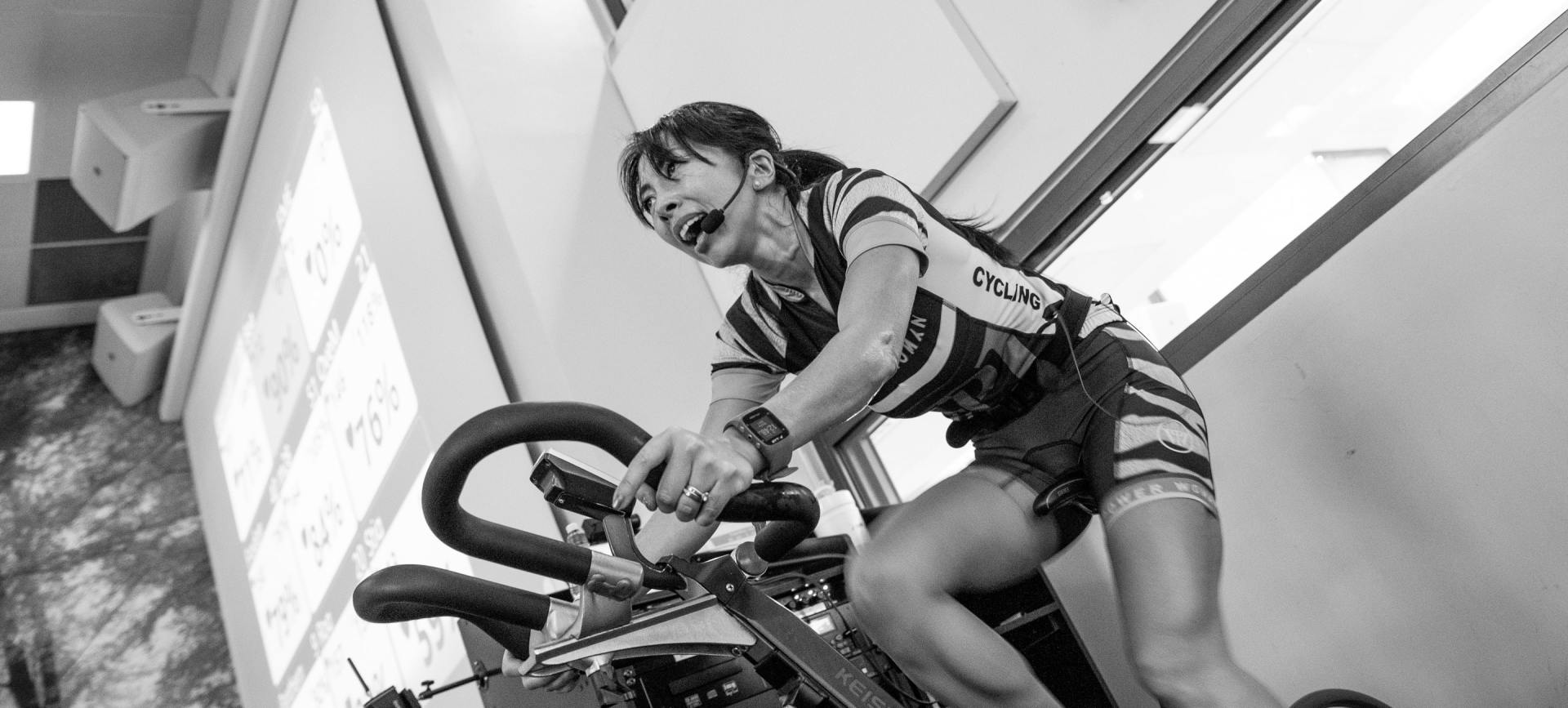What Every Beginner Should Know About Indoor Cycling Classes
UPDATE: Indoor cycling moved to Zoom in March of 2020 for several months before it was cancelled permanently in 2021. It was an important part of our programming and culture for 11 years and we miss it very much.
Congratulations! You did it. You finally signed up for that indoor cycling class you’ve always talked about. So now what? We understand that trying something new can be daunting, but don’t worry—it’s just like riding a bike. Keep these tips in mind before your first ride, and you’ll be feeling like a pro in no time.
Arrive 10-15 minutes early
Come early so you can check out the studio, fill up your water bottle, change shoes, and meet the instructor who will help you find the perfect fit on your bike. You’ll also have the option to wear a heart rate monitor if you’d like (see below for more on this).
Dress for success
You’ll need a pair of comfortable bottoms that allow you to move freely, such as exercise shorts or yoga pants. Traditional padded cycling shorts are a good choice for beginners who might be a little sensitive to sitting on a bike seat. However, there’s no need to get fancy: until you start riding serious miles outside, virtually any cycling shorts will do.
On top, wear a shirt made of moisture-wicking fabric. The more form-fitting it is, the better the wicking performance will be; but if tight shirts aren’t your thing, a baggy one is fine.
You can wear any athletic shoes you’d like, although we recommend a pair that rarely sees the outside world. Our pedals will accommodate regular sneakers, or bike shoes with the standard SPD cleat.
Know what to expect
First, there will be an easy warm up that lasts about 10 minutes. During the warm up, the instructor will outline what the rest of the ride will be like, and remind the class about good form and riding mechanics.
You’ll choose the gear, or resistance, that works best for you. You are always in control of your resistance and can set it wherever you feel is appropriate. The intensity will increase gradually according to the instructor’s plan. They’ll let you know how long a specific drill will last, how fast to pedal, and what Zone to be working in.
Read up on the lingo
Training Zone, RPE, and work intensity are fairly interchangeable terms that help you measure how hard you’re working. We usually refer to Zones, but have a handy translation chart in case you’re familiar with a different system
You’ll also hear us talk about lactate threshold, a unique measurement we use that sets us apart from other indoor cycling classes. Your lactate threshold is specific to you, and has nothing to do with your age, sex, or fitness level. It refers to the most challenging effort that you can sustain for an hour if you really push yourself.
Think of it like this. If you’re working so hard you can’t make it 60 minutes, you’re over your threshold. If you finish a 60-minute ride and realize you could have gone harder, you were below your threshold. If, at the end of 60 minutes, you barely have enough energy to step off your bike before collapsing into a hot, sweaty mess on the floor, you’ve found your threshold!
The good news is, while we will frequently ride at that level of intensity, we’ll never do it for 60 minutes straight. So, you can rest assured that you’ll always be able to make it home safely.
(Optional) Wear a heart rate monitor
If you choose to ride with a heart rate monitor, you’ll see your heart rate as a percentage on the screen at the front of the class. That percentage is relative to your lactate threshold heart rate.
A reading of 100% means you’re working at your lactate threshold. We warm up in the 70-80% range, get going in the 80-90% range, work hard in the 90-100% range, and do short bursts of high-intensity work in the 100-110% range (we always take breaks when the level of intensity exceeds 100%).
If this is your first time with us, the numbers on the screen won’t mean much. However, we’re happy to set up an appointment to measure your LTHR before your first ride, if you’re interested.
Indoor cycling classes at Vitruvian Fitness provide a great way to challenge yourself, get fit, and have fun. Our state-of-the-art equipment and expert trainers give our programs an exceptional edge. Still have questions? Give us a call at 303-455-0437. We’d love to hear from you!
You might also enjoy these posts . . .








